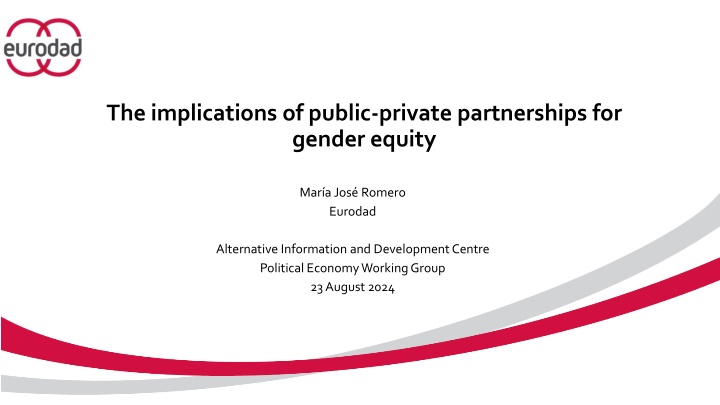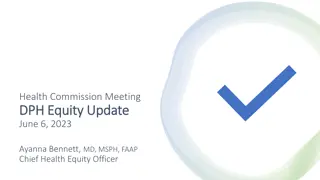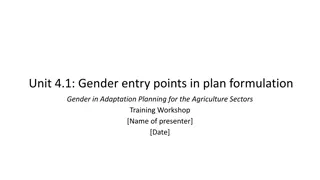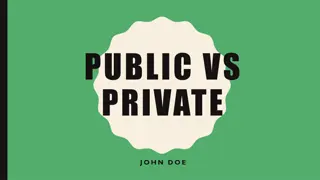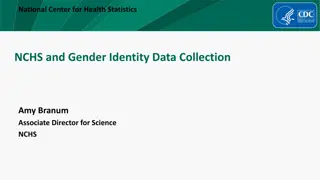Gender Equity in Public-Private Partnerships
The article explores the implications of public-private partnerships (PPPs) for gender equity, analyzing the role of PPPs in promoting gender equality within the context of international development goals. It discusses the background of PPPs, their key characteristics, promoters, challenges, and potential impact on gender equality.
Download Presentation

Please find below an Image/Link to download the presentation.
The content on the website is provided AS IS for your information and personal use only. It may not be sold, licensed, or shared on other websites without obtaining consent from the author.If you encounter any issues during the download, it is possible that the publisher has removed the file from their server.
You are allowed to download the files provided on this website for personal or commercial use, subject to the condition that they are used lawfully. All files are the property of their respective owners.
The content on the website is provided AS IS for your information and personal use only. It may not be sold, licensed, or shared on other websites without obtaining consent from the author.
E N D
Presentation Transcript
The implications of public-private partnerships for gender equity Mar a Jos Romero Eurodad Alternative Information and DevelopmentCentre PoliticalEconomyWorkingGroup 23 August 2024
Content 1. Background 2. Whatare PPPs? 3. Who promotes PPPs and how? 4. WhyPPPs are used/promoted? 5. PPPs and gender equality key challenges 6. Concludingremarks
1. Background The UN 2030 Agenda for Sustainable Development proposes an ambitious action plan, which includes key commitments in areas that are crucial for ensuring women s rights and gender equality for instance, setting goals on health (SDG3) education (SDG4) and infrastructure (SDG9), as well as a specific goal that refers to gender equality and the empowerment of all women and girls (SDG5). How to finance the expansion of infrastructure and public services and increase their quality, while reducing poverty and inequalities? Different financing instruments are promoted, as part of a debate that focuses on using public resources to 'leverage' resources from the private sector, with important consequences for the achievement of human rights (health, education, among others). Key assumptions: Financing needs are enormous and public resources are insufficient financing gap to be closed through leveraging. However, a narrative and practices focused on the use of public funds to leverage private finance is a policy option that reflects the international community's lack of will to expand and strengthen public financing for development. Are PPPs a tool to deliver on the SDGs and on gender equity, in particular?
2. What are PPPs? PPPs are agreements in which private sector companies replace the state as the provider of traditional public services, including healthcare, education, transport, energy, water and sanitation; and where the public and private sector agree (by signing a medium to long-term contract) on how to distribute the risks associated with the project. PPPs take different forms depending on the sector and countries, but what characterises all PPPs is their ability to generate (and guarantee) income for the private sector, in many cases large multinational companies. PPPs can be seen as a wedge in how the policy space around infrastructure provision is being redefined, with important repercussions over and above their (relatively small) immediate financial significance (Bayliss and Van Waeyenberge, 2018). Efforts to promote PPPs point to clear attempts to increase the involvement of private finance in development, and have resulted in concrete changes in how laws, policies and (development and sectorial) plans are designed. PPPs have to be analysed in the context of the increasing commercialisation and privatisation of health, education and other public services as well as the increasing financialisation of our economies (for financialisation, see Aalbers2019).
3. Who promotes PPPs and how? Multilateral Development Banks: the WBG is a lead actor in the development finance landscape. It finances projects (public and private sector projects), provides advice to governments and companies, and develops policy guidelines on PPPs, including how to structure PPP contracts. Together with other donors and institutions, the WBG has set up multiples initiatives to promote changes in national regulatory frameworks to allow for PPPs. The WBG also exerts its influence on PPPs through policy conditionality. The objective of the WBG is to enable PPP projects, de-risking projects, sectors and countries. Different governments: the UK, the Netherlands, Germany, others, as they work bilaterally and through the EU, the G20 and the WBG. Private sector actors: think thanks, large foundations, and big accounting firms, as well as multinational companies active in construction, water, education, health, energy. They advocate for PPPs at different levels and in different fora, including in their bilateral engagement with governments from both the global north and the global south.
4. Why are PPPs used/promoted? Governments: To respond to underfunded public services, generating the illusion that the private sector will pay for the infrastructure or service (= hide government debt) IMF: Many PPP projects are proposed to circumvent budget limitations and postpone the recording of the fiscal cost, without a detailed analysis of the costs and benefits. In search of efficiency, under the assumption (ideological claim) that the private sector is more efficient than the public sector (the systematic underfunding of public services has contributed to undermining the State's capacity to deliver social services). Private sector: New business sector (government pays) Reduced risk (guaranteed income + government and multilateral guarantees.)
5. PPPs and gender equality key challenges (I) Usually the most expensive method of financing Up to twice cost of government borrowing. Usually very risky Riskier for the state than for the private companies involved, as the public sector is required to step in and assume the costs when things go wrong. Very complex to negotiate, implement and monitor. Often renegotiated, which means an increase in the total cost of the project Low transparency, limited public scrutiny and fail to engage local communities PPP contracts are subject to commercial confidentiality issues. Often impact negatively on the poor and contribute to increased divide between rich and poor. Often result in serious social and environmental impacts.
5. PPPs and gender equality key challenges (II) PPPs fail to increase available government resources as they are often more expensive and carry more risks. There is not enough proof of the efficiency of PPPs. Often efficiency gains come at a cost, for example, resulting from lack of investment by the private sector partner to deliver services to an adequate standard or by lowering costs, which in some cases mean hiring unqualified teachers or cutting jobs. Private sector companies are accountable to their shareholders, not to citizens. Communities needs are not their priority. It has proved difficult to hold private actors to account. The search for profits of private actors: limits access to services to those who cannot pay for them; limits the supply of decent work for women in projects implemented as PPPs (for example, in health and education).
5. PPPs and gender equality key challenges (III) PPPs promote a narrow and managerial perspective of social services (health, education, etc.), emphasising measurable objectives and moving the debate away from a deeper feminist understanding of how to achieve transformative social and economic change. Ultimately, a key issue relates to what success in PPPs means -an area of contestation depending on whether the focus is on short-term outputs or systemic change. For instance, health PPPs leave aside the vision of the social determinants of health and gender inequalities, concentrating on a technical/curative approach to health. The prevalence of the joint private profitability-efficiency criterion places women as clients / users of services and not as right holders.
6. Concluding remarks To the mediocre or poor performance of PPPs in general and among women, the strong incentives of this financing modality to perpetuate conditions of inequality are added. PPP-funded projects must be transparent and accountable, particularly in their use of public funds, disclosure of contracts and performance reports. Commitments on gender equality are a State s responsibility. They aren t transferable to private companies. Financing of services should be assessed for their ability to ensure cost-effectiveness, accessibility and quality gender-transformative services. Mobilising domestic resources would offer a genuine choice in financing public services. Human rights compliance guarantees should be built into contracts when working with private sector partners. An informed debate on public policies is necessary. PPPs are not a silver bullet and might undermine work towards gender equality.
Thank you! For more information: mromero@eurodad.org www.eurodad.org
